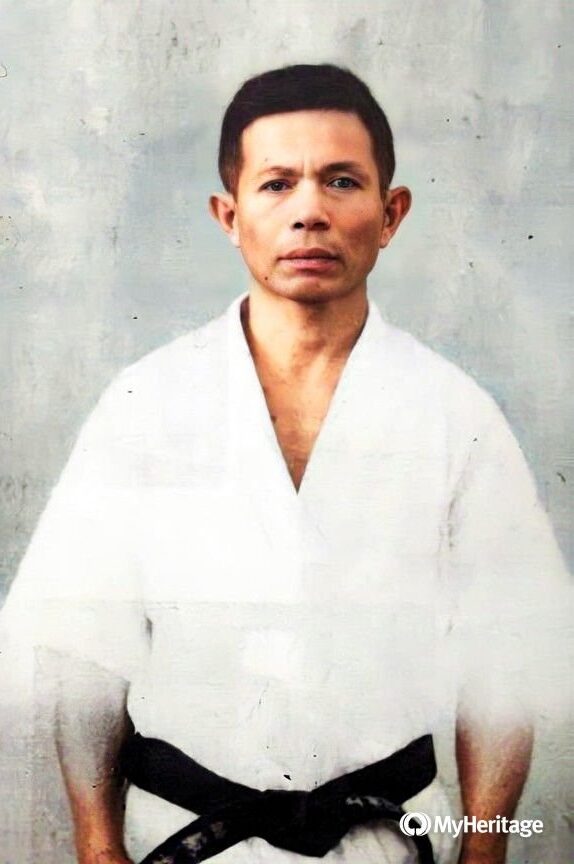Kanei Uechi (June 26, 1911 – February 23, 1991) was the son of Kanbun Uechi, the founder of Uechi-Ryū, one of the principal karate styles originating from Okinawa. Kanei played a pivotal role and was a leading figure in the development of Uechi-Ryū following his father’s passing.
In the initial years of Kanei’s life, his father, Kanbun Uechi, was reluctant to discuss his martial arts training; however, he eventually established his first dōjō, where he taught Pangainoon (Half Hard Half Soft) in Wakayama Prefecture, Japan, in 1926. At the age of 16, and while in poor health, Kanei traveled to Wakayama to commence training with his father. In 1937, Kanei was awarded a certificate of full proficiency in Pangainoon by his father.
At the age of 26, he established a new dōjō in Osaka with the approval of his father. Due to its insufficient success, in 1940, Kanei relocated the dōjō to Amagasaki in Hyogo Prefecture. He instructed there for two years before returning to Okinawa in 1942. In April 1949, with the assistance of Ryuko Tomoyose, Uechi Kanei founded the Nodake and Kanzatobaru dōjō. These were merged into a single entity called Futenma dōjō in 1957. Subsequently, Uechi-Ryū was opened to the public, including American G.I.s, becoming one of the pioneering styles to teach karate to foreigners. While his father’s direct students established their own dōjōs, Kanei was acknowledged as the head of the style until his passing.
Kanei understood early on that students of the modern age would have difficulty understanding the formal Pangainoon and its three kata. From 1931 onward, Kanei dedicated himself to developing new methods and forms to help students grasp Uechi-Ryū. Together with other senior Uechi-Ryū instructors, he introduced warm-up and stretching exercises called junbi undō, which incorporate elements from all the kata of the system as well as additional techniques. They also added two prearranged “yakusoku kumite,” called Kyu Kumite for Kyu ranks and Dan Kumite for Dan ranks, and three new “bridging” kata between Sanchin and Seisan, along with two between Seisan and Sanseiryu.
Looking for all Kanei’s Kata? Check here


